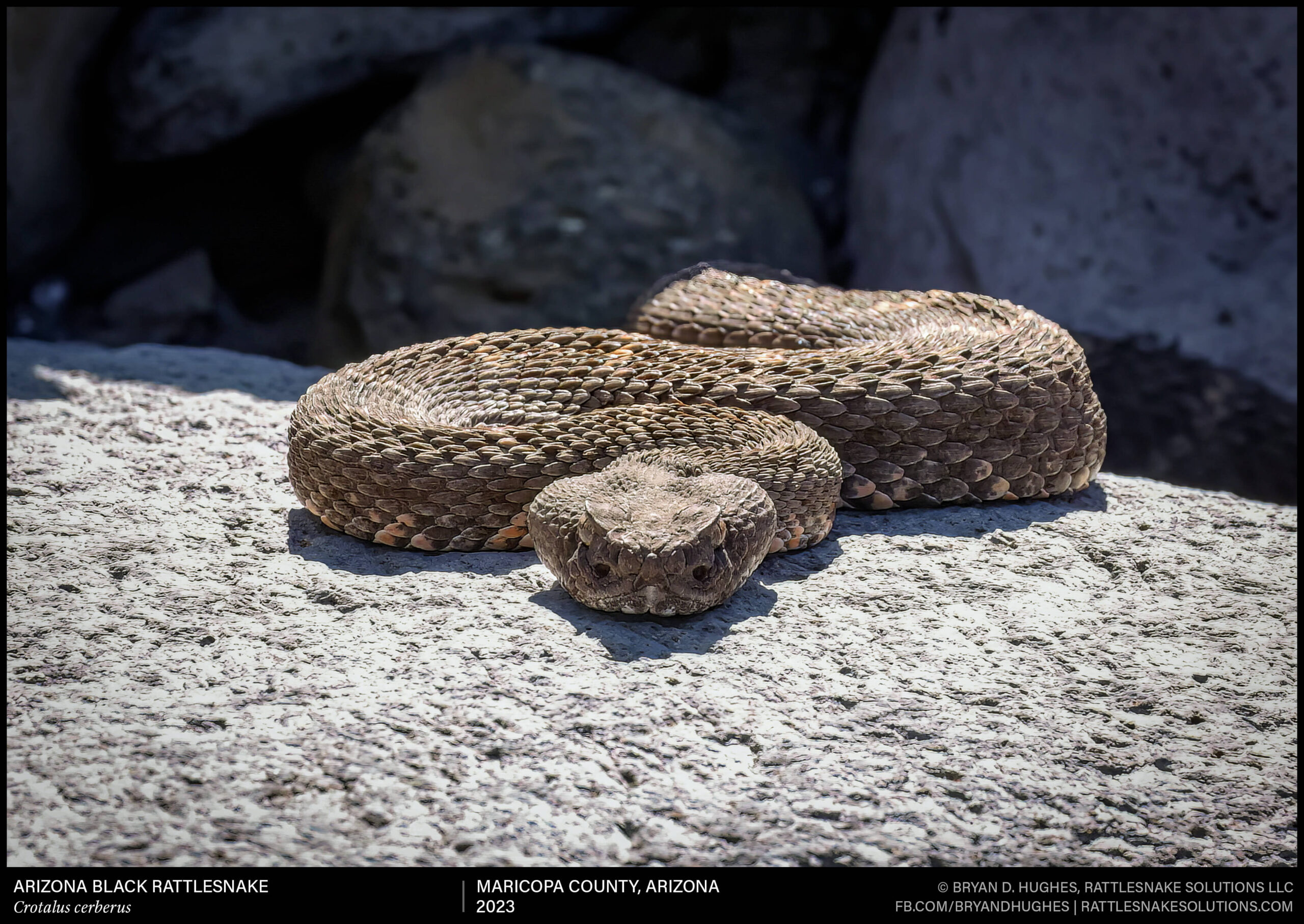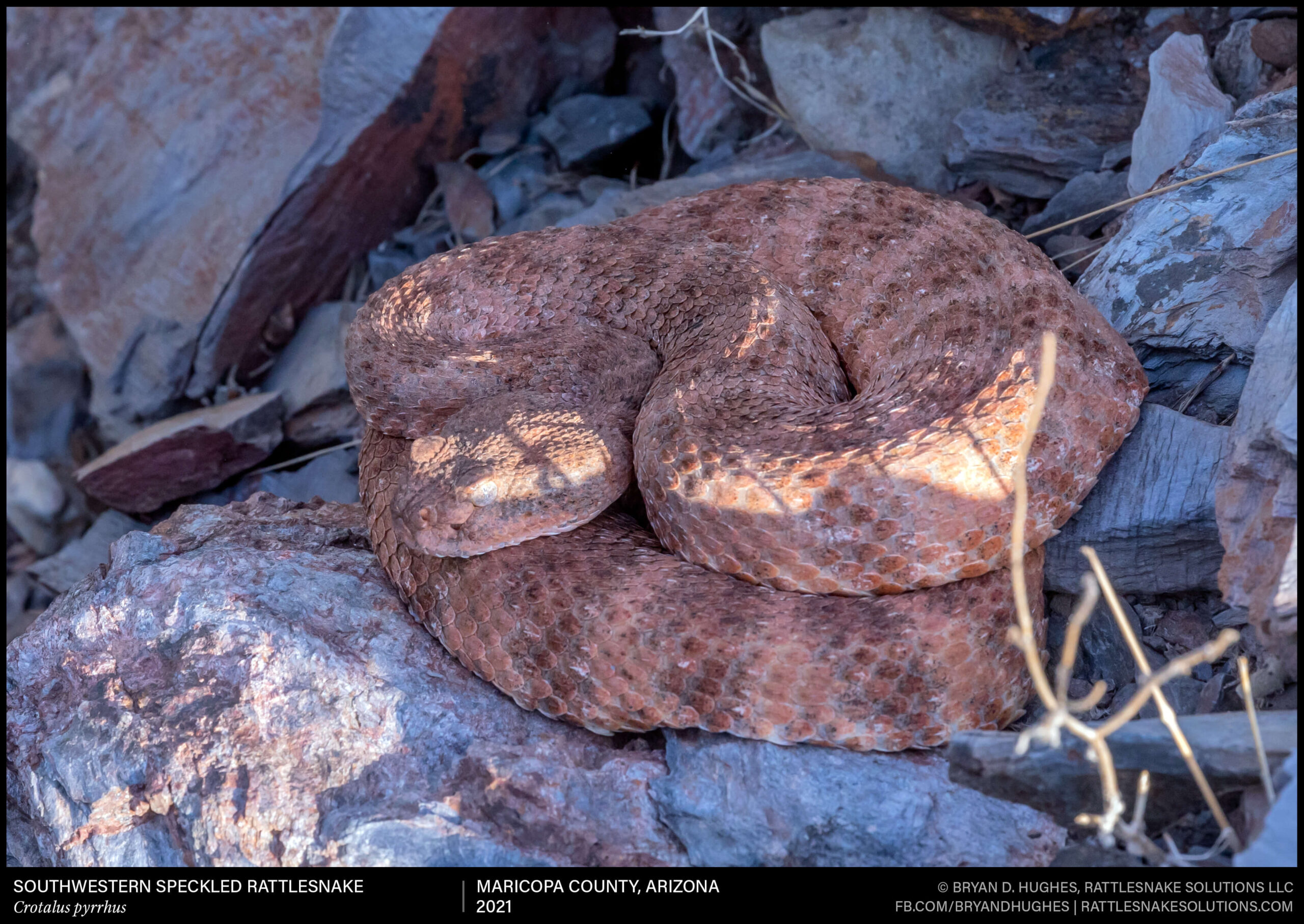I spotted this Horned Viper basking in the grass at the edge of thick vegetation. Greece, 2022.

I spotted this Horned Viper basking in the grass at the edge of thick vegetation. Greece, 2022.

A Sonoran Sidewinder from a sandy area in the far western end of the range for this subspecies. This is an older adult, measuring around 18″ long.

A Blacktailed Rattlesnake disturbed by my car as I made my way up a mountain road. These are large rattlesnakes found throughout the Sonoran Desert, including the high elevation Sky Islands of the southeastern part of Arizona. After a few photos, this snake was left to crawl down to cover.

Tiger Rattlesnake resting outside its aestivation den on a hot Phoenix summer night. These snakes are quite common in much of the area, though most hikers will never see one due to their secretive nature and effective camouflage. Even of those reported, a large number of them … if not most of them, end up being misidentified Speckled Rattlesnakes.

Rattlesnakes live in the highest areas of Arizona, often taking forms that defy what most residents would think possible. This one, an adult Twin-Spotted Rattlesnake (Crotalus pricei), is only about 20″ long as a mature adult, with a narrow head, tiny rattle, and body pattern that convergently looks just like a harmless nightsnake.
These are one of the four species of rattlesnakes in Arizona that are protected by law from any kind of disturbance, thankfully.

A tiny Two-Striped Forest Pitviper (Bothrops bilineatus) from Loreto, Peru. This was the first I’d ever seen and it didn’t disappoint. Just a beautiful little green snake with a hint of blue.

An Arizona Black Rattlesnake in ambush in the first sun of the day. The flat rock is on the only, narrow path to a natural water hole – the only water in the region. Any small mammal wanting to visit it would have to jump across this rock. This is likely something this snake knows very well by now, an example of how much can go into the selection of a hunting position. If I may anthropomorphize a bit, I’d call it strategic.

Southwestern Speckled Rattlesnake sitting out in the early morning after a long night waiting for a mouse. It will have another chance for prey, as birds and lizards visit the hillside, possibly not noticing this orange “rock” perfectly situated in the landscape.

This tan Blacktailed Rattlesnake was spotted on a night hike in the Harquahala mountains of western Arizona. In the low desert, they look quite different than the typical yellow and black Blacktails we often post photos of. This is a very adaptable species, thriving in mountainous habitat from sea level to high mountains, in hot, dry deserts to relatively cool pine forest and all in between.

A Southwestern Speckled Rattlesnake hiding away on a dry May day. A site nearby will serve as an aestivation den a few weeks later, once temperatures were firmly in the triple digits each day.
